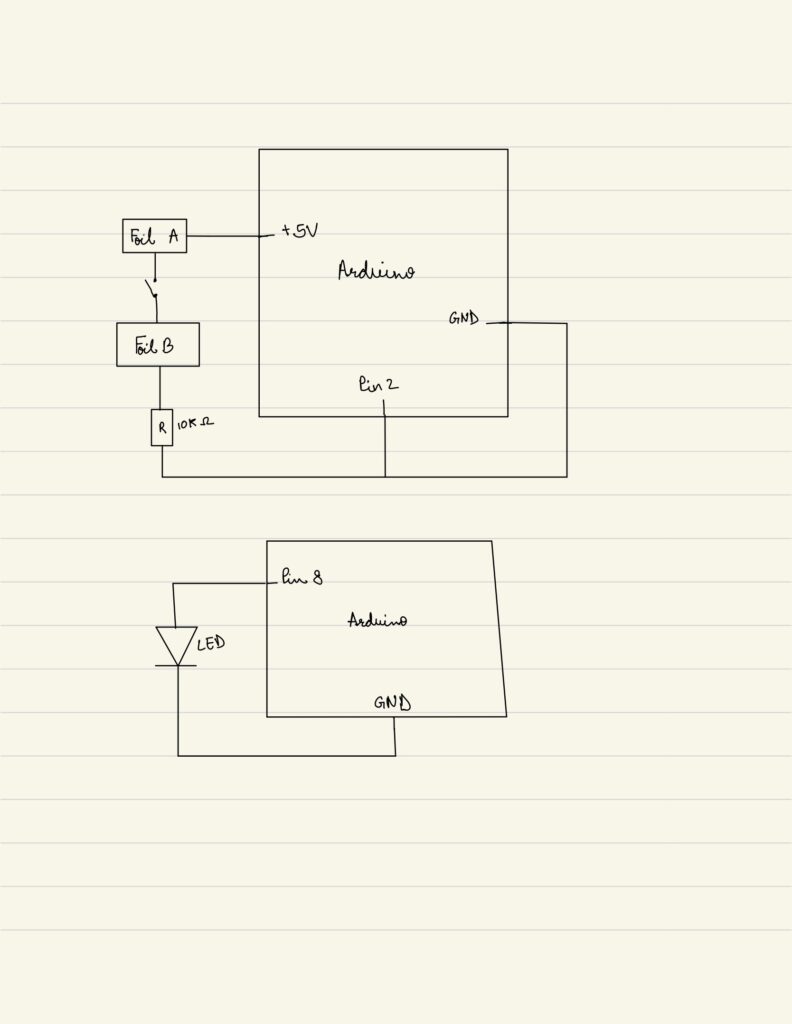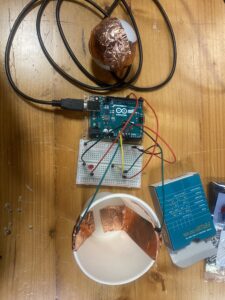Inspiration
I drew inspiration from interactive toys and physics-based games where an object’s motion triggers an outcome. I wanted to create a setup where the physical action of dropping an object could directly influence the visual cues.
Concept
The idea is simple yet engaging: dropping a conductive ball into a cup lights up an LED. The cup contains two strips of conductive material that act as a switch. When the ball touches both strips, it completes the circuit, sending a signal to the Arduino, which then lights the LED. This concept transforms a small, physical action into a clear electronic response, demonstrating the connection between the real world and digital systems.
Implementation
To bring the concept to life:
I attached two strips of copper tape inside a cup, positioned on opposite sides so that the ball could touch both when dropped.
Wires were connected from the copper tape to the Arduino circuit: one to 5V, the other to a digital input pin with a pull-down resistor to stabilize readings.
The LED was connected to another Arduino pin with a series 10K ohm resistor to prevent overcurrent.
Finally, I wrote a simple Arduino code using digitalWrite to read the input from the cup and light the LED whenever the ball completed the circuit. This setup allowed the system to react instantly when the ball was dropped, making it interactive.
Pictures
fig 1: circuit schema
fig 2: circuit
Challenges
During development, several practical challenges arose:
Material availability: Initially, I planned to use Aluminum foil as the conductive ball but it was unavailable. I switched to copper as a complementary conductor, which worked well.
Maintaining electrical contact: Attaching wires to the copper tape and ensuring consistent contact was difficult. The wires would often become loose, causing the LED to light only at certain angles. To resolve this, I maximized the contact area between the ball and copper strips and reinforced the connection from the cup to the breadboard. This ensured reliable detection whenever the ball was dropped.
Future Improvements
A possible future enhancement would be to introduce multiple cups or targets, each connected to a different colored LED and sound output. For instance, when the ball drops into a specific cup, it could trigger that cup’s LED to light up in a unique color and play a corresponding sound. This would make the interaction more dynamic and visually appealing.
To make it more game-like, the cups could be arranged in a triangular formation, with each cup representing a different score or difficulty level. For example, the front cup might be worth fewer points while those at the back are worth more. The Arduino could then keep track of the scores based on which input pin was triggered, creating an engaging mini electronic scoring game.


